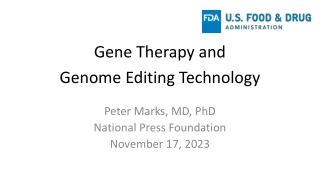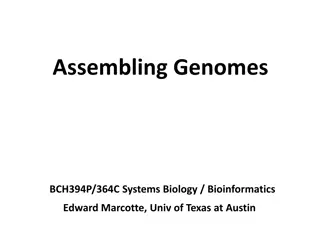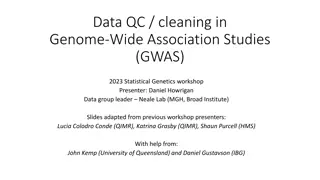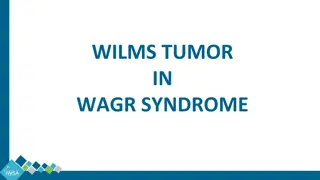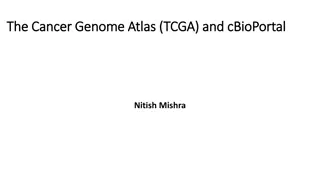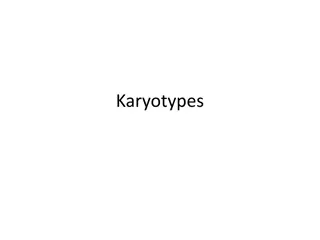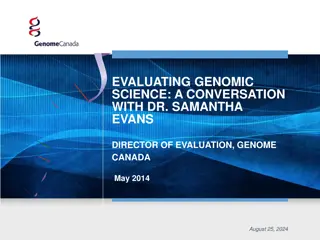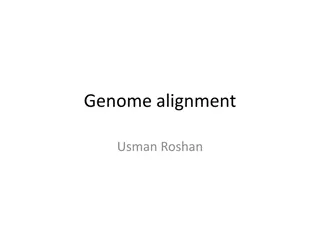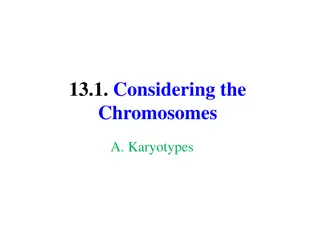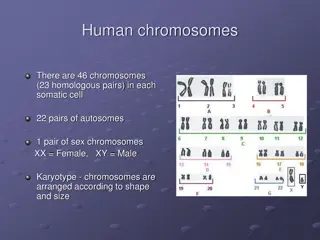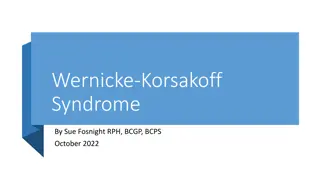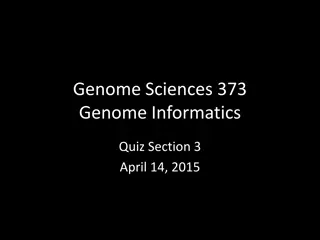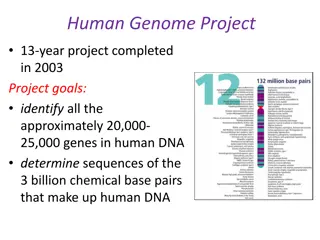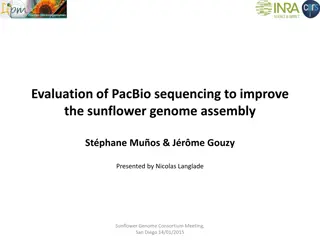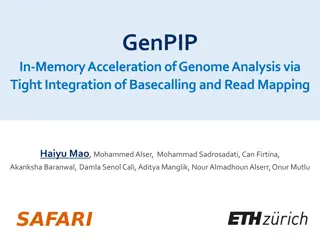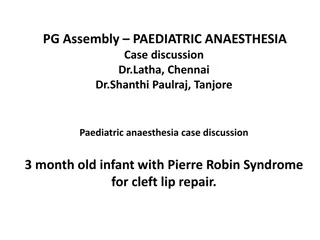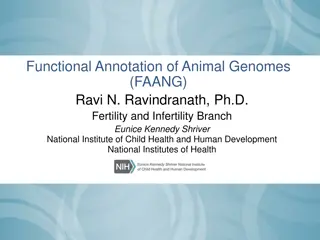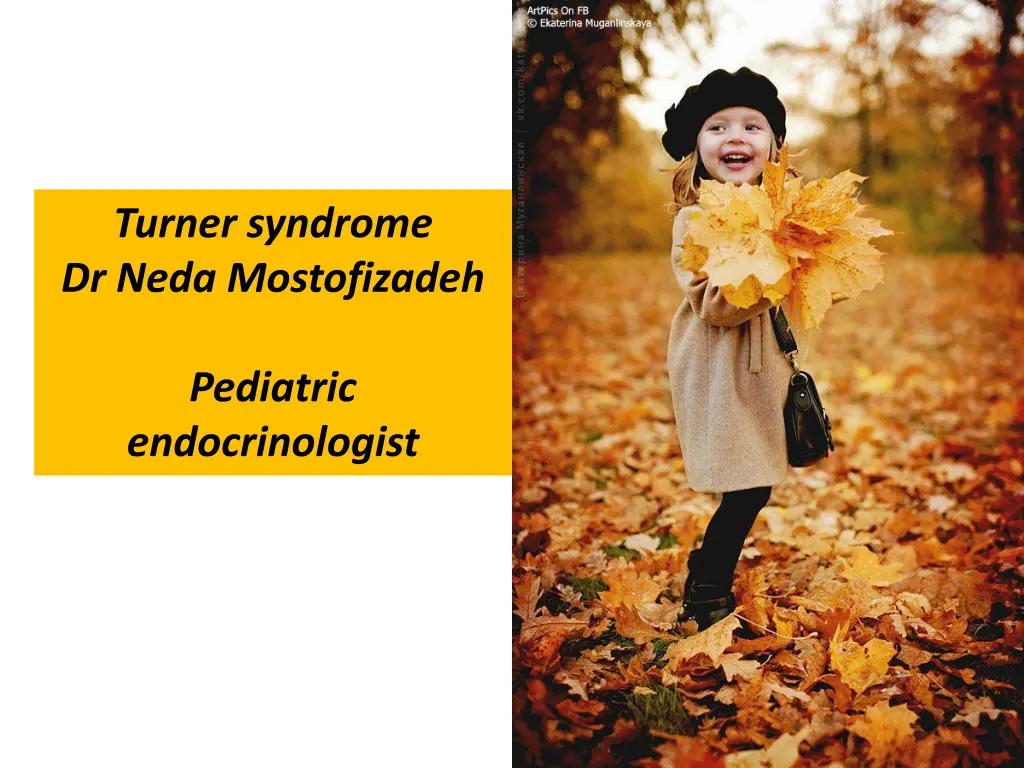
Turner Syndrome: Diagnosis, Management, and Counseling Insights
Learn about Turner syndrome, a genetic condition characterized by a 45,X karyotype, through expert insights from Dr. Neda Mostofizadeh, a pediatric endocrinologist. Explore the challenges in prenatal counseling, monitoring for cardiovascular comorbidities, and management guidelines. Get valuable information on the diagnosis certainty with cystic hygroma findings and the importance of cardiovascular evaluation and QTc interval monitoring in Turner syndrome patients.
Download Presentation

Please find below an Image/Link to download the presentation.
The content on the website is provided AS IS for your information and personal use only. It may not be sold, licensed, or shared on other websites without obtaining consent from the author. If you encounter any issues during the download, it is possible that the publisher has removed the file from their server.
You are allowed to download the files provided on this website for personal or commercial use, subject to the condition that they are used lawfully. All files are the property of their respective owners.
The content on the website is provided AS IS for your information and personal use only. It may not be sold, licensed, or shared on other websites without obtaining consent from the author.
E N D
Presentation Transcript
Turner syndrome Dr Neda Mostofizadeh Pediatric endocrinologist
case 1 . 6 . 1 - 2 - 3 -
Definition If a fetus with a large cystic hygroma or hydrops is found to have a 45,X karyotype, the diagnosis of Turner syndrome can be made with certainty .
Prenatal counseling Prenatal counseling may be challenging because it can be difficult to predict the phenotype of girls with incidentally diagnosed Turner syndrome.
MONITORING AND MANAGING COMORBIDITIES Initial evaluation : At the time of diagnosis, all infants and children with Turner syndrome should have a cardiovascular evaluation by a cardiologist: BP in both the upper and lower extremities. ECG to assess for conduction abnormalities(prolonged QTc interval). Cardiac magnetic resonance (CMR) imaging as soon as the patient is old enough to tolerate the procedure without general anesthesia ( 12 years) .
MONITORING AND MANAGING COMORBIDITIES All patients with Turner syndrome,should undergo cardiovascular follow up . For those with a prolonged QTc interval on ECG, drugs that prolong QTc interval should be avoided ( antiarrhythmic drugs; certain nonsedating antihistamines terfenadine, astemizole, certain antimicrobials , macrolide fluoroquinolone antibiotics, metronidazole, some antifungal agents, antiretroviral drugs, certain psychotropic medications , haloperidol, certain gastric motility agents , cisapride.
MONITORING AND MANAGING COMORBIDITIES Antimicrobial prophylaxis is not required for most Turner syndrome patients. Only patients with the highest risk of the development of endocarditis receive antimicrobial prophylaxis .
MONITORING AND MANAGING COMORBIDITIES Any complaint of chest pain should be evaluated urgently by a specialist because it may be a symptom of early dissection.
MONITORING AND MANAGING COMORBIDITIES Hypertension : BP should be monitored at every clinical visit. Measure BP manually (automatic BP monitoring often results in falsely high readings). Evaluate for causes of HTN (kidney disease, obstructive uropathy,co A).
MONITORING AND MANAGING COMORBIDITIES Cognitive function and learning: Annual developmental and behavioral screenings until adulthood, with referrals as needed.
MONITORING AND MANAGING COMORBIDITIES Most individuals with Turner syndrome have normal intelligence, but girls with a small ring X chromosome have a higher risk for significant intellectual disability. Patients may have ADHD and difficulties with visual-spatial organization, social cognition, and nonverbal problem- solving tasks such as mathematics.
MONITORING AND MANAGING COMORBIDITIES Tympanometry and audiology : Regular monitoring of hearing, including serial audiology evaluations, is recommended throughout life. Audiology evaluation every three years in children and every five years in adults.
MONITORING AND MANAGING COMORBIDITIES Scoliosis and kyphosis : Surveillance for scoliosis and kyphosis is important throughout childhood, and especially during adolescence . Visual inspection of the spine annually, and every six months during GH therapy. Consideration for radiographic assessment around school entry (5 to 6 years of age), and during mid-puberty (12 to 14 years of age), or when concerns arise.
MONITORING AND MANAGING COMORBIDITIES The presence of scoliosis or kyphosis does not preclude GH therapy but warrants close monitoring during therapy, sometimes with the assistance of orthopedic specialists .
MONITORING AND MANAGING COMORBIDITIES Renal anomalies and urinary tract infections: Patients should undergo renal ultrasonography at the time that Turner syndrome is diagnosed. If structural abnormalities are identified, patients should be evaluated by a nephrologist and monitored clinically for UTI.
MONITORING AND MANAGING COMORBIDITIES Ophthalmology : An ophthalmologic examination is recommended at the time of diagnosis (starting in the second year of life) and every three years (risks for strabismus, amblyopia, and ptosis) .
MONITORING AND MANAGING COMORBIDITIES Edema : Edema is due to lymphatic hypoplasia. Lymphedema at birth usually remits substantially but not always completely. Anecdotal reports describe worsening of some of the edema coinciding with the institution of either GH therapy or estrogen supplementation. Can be controlled in most cases with support stockings, lymphatic drainage massage therapy, and physical therapy. Vascular surgery aimed at the correction of the lymphedema is rarely indicated. Use of diuretics does not help and is not warranted.
MONITORING AND MANAGING COMORBIDITIES Celiac disease : Screen beginning in early childhood ( two years of age) and repeating every two years throughout childhood . During early adulthood, screening should be repeated if symptoms suggestive of celiac disease arise.
MONITORING AND MANAGING COMORBIDITIES Autoimmune thyroiditis : Screen by measuring TSH and free or total T4 annually beginning around four years of age .
MONITORING AND MANAGING COMORBIDITIES Liver disease : Screen for liver disease by measuring AST,ALT,GGT,ALKP annually after 10 years of age. Abnormalities are common ,due to metabolic syndrome and obesity and/or autoimmunity. Patients with persistent aminotransferase elevations (greater than twice the upper limit of normal) should be further evaluated for other causes of liver disease and/or referred to a hepatologist. Liver enzymes may remain elevated throughout childhood and in the adolescent years, they may improve or resolve with estrogen therapy.
Metabolic syndrome Screen for hyperglycemia by measuring hemoglobin A1c, with or without fasting glucose, annually beginning at 10 years of age. Screen for dyslipidemia by measuring a lipid panel annually if at least one cardiovascular disease risk factor is present
MONITORING AND MANAGING COMORBIDITIES Vitamin D deficiency : Screen for vitamin D deficiency by measuring serum 25-OH-D, between 9 and 11 years of age, and every two to three years thereafter. Girls and women with Turner syndrome have an increased risk of fracture even with a normal BMD. BMD assessment is not needed during the childhood years. BMD assessment should begin when patients reach adult estrogen replacement doses.
MONITORING AND MANAGING COMORBIDITIES Gonadoblastoma risk : Screen for Y chromosome mosaicism in any Turner syndrome patient who has marker chromosome elements (sex chromosome material of uncertain origin) detected on the karyotype, or who develops virilization. This is because Y chromosome mosaicism is associated with an increased risk for gonadoblastoma. Routine molecular search for Y chromosome-derived DNA is not necessary in Turner syndrome patients without marker chromosome elements or virilization.
MONITORING AND MANAGING COMORBIDITIES If Y chromosome material is detected, prophylactic removal of the gonads (oophorectomy or salpingo-oophorectomy),is needed even if they appear to be streak gonads . Hysterectomy is not recommended to preserve the possibility of pregnancy using donor oocytes. Streak gonads do not need to be explored or removed in patients without Y chromosome mosaicism, including those with 45,X karyotype.
MANAGEMENT OF SHORT STATURE Monitoring growth : The height of patients with Turner syndrome should be plotted on growth curves specific for this disorder. These growth curves show height percentiles for untreated patients with Turner syndrome, as well as height percentiles for the general female population. GH testing is not indicated . GH therapy in pharmacologic doses improves growth.
Growth hormone therapy Most patients with should be treated with GH therapy to maximize their adult height and improve body composition.
Indications and timing GH should be initiated as soon as the height of a girl with TS falls below the fifth percentile for age on the normal female growth chart(between two and five years of age) . Young patients with particularly slow growth velocity may benefit from starting growth hormone even earlier ( before the height falls below the fifth percentile).
Indications and timing The clinician should monitor how the patient's growth compares with the expected growth based on the mid- parental (target) height and expected target height growth curve. Significant deviation from the expected growth curve should prompt assessment of superimposed secondary causes of growth failure and/or earlier intervention.
Dosing In the United States, a typical initial dose of GH is 50 micrograms/kg/day (0.35 to 0.375 mg/kg/week), given once daily . Patients with TS are typically treated with somewhat higher doses of GH compared with patients with GH deficiency.
Dosing Doses of growth hormone up to 67 micrograms/kg/day have been used in the United States. GH therapy should be continued until little growth potential remains ( BA exceeds 13.5 to 14 years and growth slows to less than 2.5 cm per year).
Dosing Because this dosing scheme is based on BW, GH dose may be excessive if the child is overweight. To avoid this problem, we suggest measuring serum concentrations of IGF-1 annually . GH dose could then be adjusted as needed to maintain IGF- 1 below +2 SD above the mean for age and/or Tanner stage of pubertal development, but ideally slightly above the mean (approximately +1 SD).
Dosing This is because a high IGF-1 (eg, >+3 SD) may be associated with toxicity, while a low IGF-1 suggests that the dose of GH may be insufficient and may not achieve an optimal growth response.
DOSING GH dosing in Turner syndrome patients can be calculated based on body surface area (1.33 mg/m2/day as a starting point). This approach may be most appropriate for the TS patients beyond 9 to 10 years of age, when they are more likely to be overweight and, therefore, body weight-based dosing is more likely to lead to overdosing .
Efficacy Initiation of GH at a young age (four to six years) often permits attainment of normal adult height.
Efficacy Early GH treatment can correct growth failure and normalize height in infants and toddlers with Turner syndrome. The effects of this approach on adult height have not been published yet.
Efficacy We do not recommend the routine use of very low-dose estrogen in prepubertal children ( before 11 years of age), because its effects on height are modest (an additional 2.1 cm), and this may be insufficient to justify its use. It is possible that such very low-dose estrogen therapy may also improve bone mineralization and memory and cognitive function, but these outcomes require further investigation .
Efficacy GH therapy may have beneficial effects on body composition. Increase lean body mass and decreased body fat . These changes were independent of estrogen exposure. Do not have a deleterious effect on BP, LVF, or aortic diameter . Adverse effects of GH therapy, intracranial hypertension, slipped capital femoral epiphyses, and pancreatitis are uncommon but perhaps slightly more prevalent than in children who are treated with GH for indications other than TS.
Efficacy Strategies for severe short stature : In girls 10 to 12 years of age with severe short stature, we suggest offering either treatment with oxandrolone (a nonaromatizable androgen) or delayed pubertal induction, but not both, in addition to growth hormone therapy .
Adjunctive oxandrolone Adjunctive oxandrolo Oxandrolone improves height velocity through its anabolic effects (by increasing protein synthesis, lean body mass, and BMD). Given at a low dose (0.03 mg/kg per day or less, and increased to no more than 0.05 mg/kg per day) from the age of 10 years or older and in combination with GH therapy.
Adjunctive oxandrolone Higher doses of oxandrolone should not be used, because they may result in virilization. Oxandrolone treatment is continued until estradiol therapy is begun, around 11 or 12 years of age.
Delayed pubertal induction May improve height outcome by postponing epiphyseal fusion triggered by estradiol, and may be helpful when combined with high-dose growth hormone . If this approach is chosen, monotherapy with GH is continued, and estrogens are started closer to 14 years rather than the more typical time point of 11 to 12 years of age. This results in delayed induction of puberty and permits additional growth before epiphyseal fusion.
EFFICACY Either of these approaches results in a similar degree of improvement in adult height. Further study is needed to evaluate which girls with Turner syndrome would benefit most from combination therapy with growth hormone and oxandrolone and to determine the optimal duration of this treatment
what is new? Turner syndrome: Fertility counseling is currently suboptimal (September 2019). Although available guidelines recommend counselingindividuals with Turner syndrome about infertility, fertility preservation, and pregnancy risks starting at a young age, this is not happening routinely. Only 10 percent of patients were referred to a specialist to discuss fertility preservation and the majority of families and patients (62 percent) received no counseling about potential pregnancy-related risks. Interventions such as additionaltraining of providers are needed to improve the care of this population.

